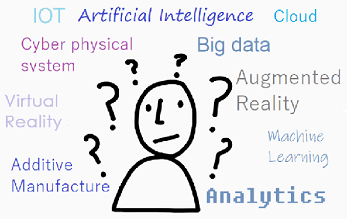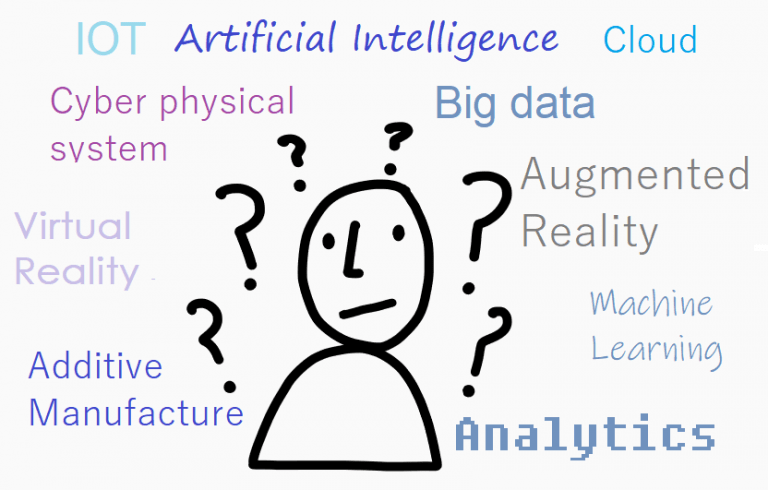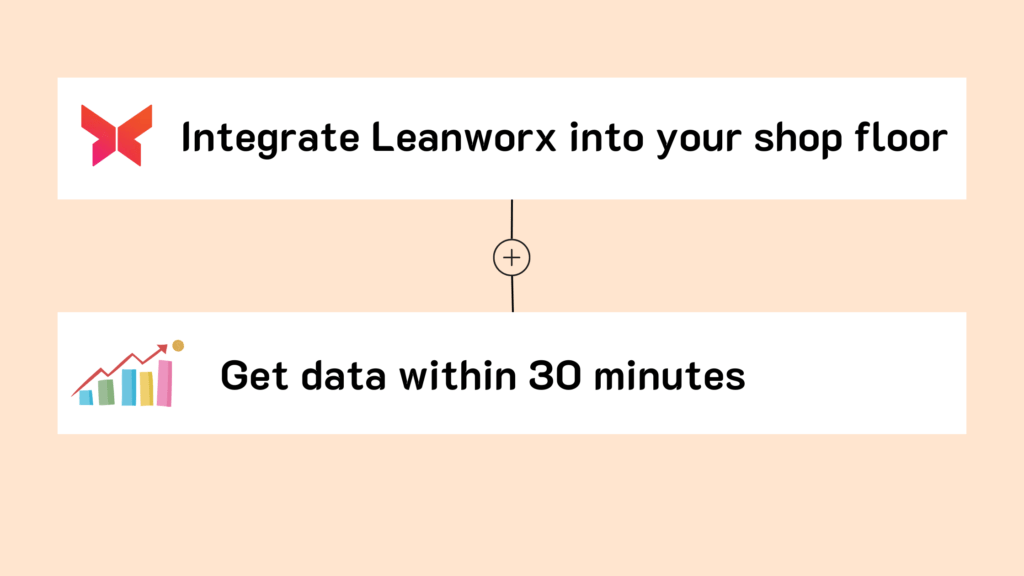Industry 4.0 terms and buzzwords - navigating the jargon

Dasarathi G V
Director in Leanworx
Dasarathi is well-versed in CNC programming, tooling, and scheduling. His expertise extends to the architecture, testing, and support of CAD/CAM, DNC, and Industry 4.0 systems.
- Aug 30, 2023

Industry 4.0 terms and Industry 4.0 buzzwords – the ‘need to know’, and ‘can throw in the dustbin’.
This article is for users of Industry 4.0, who are confused by all the Industry 4.0 terms and Industry 4.0 buzzwords that are thrown at you whenever you try to understand what Industry 4.0 is, whether it will help you, how you can implement it, and what it costs.

Industry 4.0 terms and Industry 4.0 buzzwords – the confusion
You’ll be bombarded with jargon by developers and sellers of Industry 4.0 systems, and financial gurus talking about how Industry 4.0 is going to ‘change our lives’.
Like any equipment, there are aspects of Industry 4.0 that are the domain of the developers of the equipment, and other aspects that are the domain of the users of the equipment (that’s you). In a CNC machine, for example, you need to know about accuracies, vibration levels, speeds, etc. – basically what the machine can do, not how it it does it. Why should you be burdened with the maths of complex tool path interpolation strategies or the functioning of individual chips on the controller board ? Strangely, discussions on Industry 4.0 are for some reason polluted with information that users need not know, and do not enough have information that they need to know.
Here is a list of useful jargon that you need to know, the useless stuff that you can throw out of the window, and the misinformation that you can ignore.
1. What you NEED to know
Cloud
Computers and software in central locations, connected by high speed internet, instead of being within the organization. This post has more on it.
IOT (Internet of Things) and IIOT (Industrial Internet of Things)
IOT is the same old internet, used by things (devices) instead of people. IOT and IIOT are the same, but when IOT is used in industry, it is called IIOT. Just another acronym adding to the confusion. This post has more on it.
IT infrastructure
IT equipment that you need on your shopfloor to implement the Industry 4.0 system. LAN (wired/WiFi) in shop floor, Server (with A/C, physical security, backups, UPS), IT maintenance team, recurring IT maintenance cost. This post has more on it.
Digitalization
Just another word for Industry 4.0.
Digitalization is moving towards computerization of your organization’s data collection, analysis, and reporting to improve efficiency and profits. Most organizations will already have this to a substantial extent outside the shop floor, in the office. The new use of this term is on the shop floor.
Note that Digitization is different. It is the conversion of analog data to digital. E.g., converting your old printed part drawings into CAD format.
2. What you NEED NOT know, that are the software developer’s problem
Cyber physical system
A collective term that refers to the machine plus sensor. This post has more on it.
Big data
Handling of very large amounts of data that keeps growing rapidly. Handling means storage, cataloging, accessing and analyzing this data. Large volume data handling, done at high speed, with high accuracy.
Analytics
Accessing and analysis (computation, filtering, sorting, etc..) of data followed by reporting or alerting to people or communicating to other software. The data could be collected from machines, people, and other software.
Artificial Intelligence (AI)
This is ‘intelligence’ demonstrated by machines, unlike the natural intelligence displayed by humans and animals. Any logic that enables a machine or device to perceive its environment and take actions to achieve a goal. The thing about AI is that ‘Yesterday’s AI is today’s normal software;. Vision inspection, human speech recognition, etc. that were considered AI a few years ago are just routine software now.
Machine Learning (ML)
The science of getting computers to learn and do something themselves without being actually programmed to do it. Like humans learning from experience. The software improves its decision making capability on its own, without being initially being programmed that way. Example: “Ok, when the vibrations reached this level, I informed the humans and they asked me to reduce the RPM to 500. Next time I’ll do it myself”. ML is a means of achieving AI.
3. What you NEED NOT know, UNLESS they are part of your operation
For some unknown reason, some technologies are (wrongly) considered an essential part of Industry 4.0, and always mentioned with Industry 4.0 by Gurus in speeches and articles. Some favorites are Additive manufacture, Virtual reality and Robotics. They make it sound like it is Industry 4.0 only if you have these as part of your manufacturing processes. This gets quite worrying after a while, getting you thinking “Is what I am doing even worthy of being called Industry 4.0 ?”. Note that there is no such thing as an Industry 4.0 ‘standard’. There is no specified level of automation, specified manufacturing processes, etc.
Additive manufacture
Also called 3D printing. This involves building products by adding material layer by layer. Additive manufacturing starts off with nothing, and builds a part by adding material. It is done with various materials, most commonly plastics and metal. Subtractive manufacturing is what we have been doing traditionally. It starts off with raw material, and removes material to create parts. Additive manufacturing is NOT a necessary part of Industry 4.0, and Industry 4.0 implementation in your organization does not require 3D printing machines.
Robotics
Robots are NOT a necessary part of Industry 4.0. Industry 4.0 implementation in your organization does not require robots.
High Automation levels
You could have a whole lot of manually operated machines. All your material handling could be manual, and every single part of yours could involve manual intervention. High automation, is NOT a necessary part of Industry 4.0. Industry 4.0 implementation in your organization does not require this.
Virtual Reality (VR)
Virtual Reality is a 3-D, environment that is generated by a computer, which can be explored and interacted with by a person. E.g., you can learn about a machine with just a fully simulated machine and no physical machine.
Augmented Reality (AR)
Augmented Reality overlays digital information onto a physical world. E.g., you point your mobile phone camera at a machine part, the software recognizes what part it is, and gives you detailed information about the part for machine operation or maintenance.
Action point
When you are evaluating a machine that you are buying, do you bother about the diameters of bearings or the details of the finite element analysis done to design each part ? NO. You only look at the end functionality and quality, and the ability of the machine to manufacture your part.
The purpose of the Industry 4.0 system is to connect your computer network to your machines, get data from the machines accurately and instantly, convert the data to information that you use to improve your business efficiency. The information either goes to people, or to other machines. Your focus is on what information you want, and what must be done with it.
So when you’re looking at an Industry 4.0 system, just ignore jargon thrown at you. Like Artificial Intelligence, Machine Learning, Big data, Cyber physical system, Cloud computing, Digital twin. Focus on the system WHAT does for you, rather than on HOW it does it.
Etc
Astor Hotel Kolkata – popular with ‘ghosts‘

Increase your profits automatically. Use Leanworx to get accurate and instant data 24/7.


